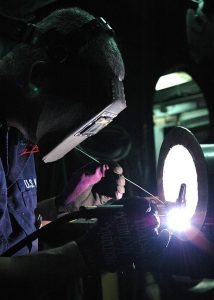How To Choose A High Quality TIG Welder
TIG welders use an electrical arc to heat the edges of metal surfaces. The edges heat as they connect and they remain firmly connected as they cool. Unlike MIG welders or metal inert gas welders that use a metal wire, TIG (tungsten inert gas) welders directly heat the metal surface.
Importance Of Picking The Ideal TIG Welder
Choosing a quality TIG welder requires that you familiarize yourself with several if the technical aspects of this type of tool. For example, you need to select a quality TIG welder that can weld different types of metals. You should also select a machine capable of working with different types of compressed gas.
- Match the metal type you want to weld to the electrical input of the TIG welder. For example, if you need a welder capable of welding hard metals like bronze, cast iron or steel, an alternating current welder should work. AC welders operate using electricity that alternates direction back and forth. If you need to weld soft metals like aluminum you need a direct current welder. Direct current electricity creates a steady arc for the welder and comes from battery cells.
- Decide on thickness of the metal that you need to weld. If you need to weld thick metals, you need a welder capable of producing high amperages (amp). Low amperage welders produce 165 to 200 amps while high-amperage welders produce 310 to 700 amps.
- Determine if your work location can accommodate your welder. TIG welders weight between40 to 200 pounds, and measure 13 to 36 cubic inches. Different TIG welders also require different plug-ins. Some require a standard 120-volt plug-in while others require a 220-volt plug in.
- Compare the duty cycles of the welder. A duty cycle of a welder indicates how long it can operate in a 10-minute interval without overheating. For example, a TIG welder that can weld for weld minutes but is in need of seven minutes downtime to cool off has a duty cycle of 30%. Duty cycles range from 15 to 60%.
- Ensure that the TIG welder fits your budget. They cost anywhere from $500 to $2,500, depending on the power.
- Compare the features of the TIG welders. They come with various attributes that include high frequency arcs and automatic fans. High frequency arcs help keep the electric current of the welder steady, giving a more precision weld. Pick a welder with as many features as you can afford.
- Compare the warranties of the welders. Most manufacturers offer two or three year warranties. There are also retailers that offer a 90-day return policy. In-store return policies can create much less hassle.
It Pays To Choose The Right TIG Welder
Choosing and buying welders can indeed be easier than done. Because of their price tags, they are considered as investments. And because they are investments, you need to make sure that you are getting the most of what you paid for them in the long run. Think about what you and your business really needs, and make them your basis in choosing the best kind of TIG welder for you.

 You MUST Ask BEFORE Hiring a Welding Company – So You Can Avoid Wasting Your Time AND Hard-Earned Dollars”
You MUST Ask BEFORE Hiring a Welding Company – So You Can Avoid Wasting Your Time AND Hard-Earned Dollars” 
Keep in Touch